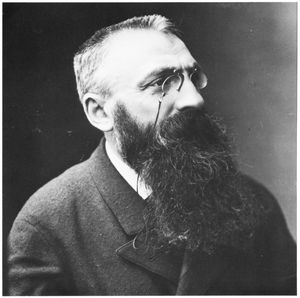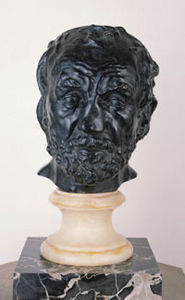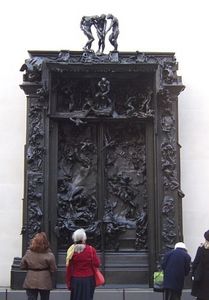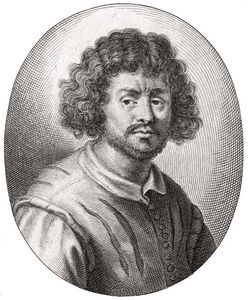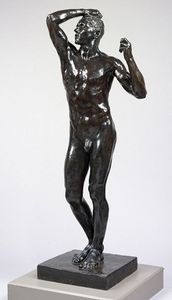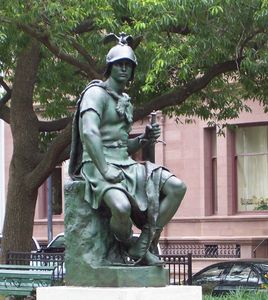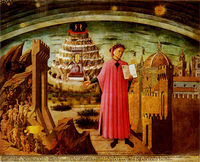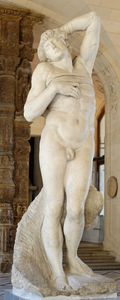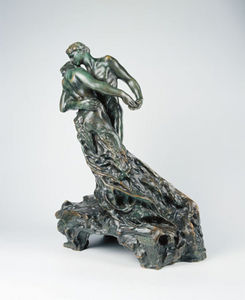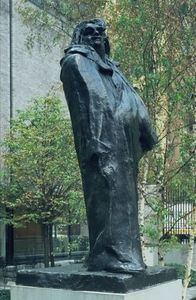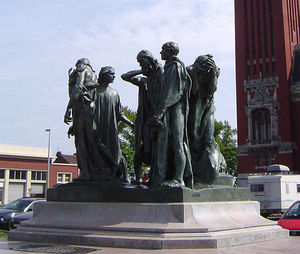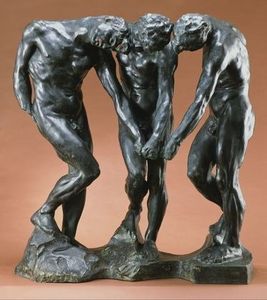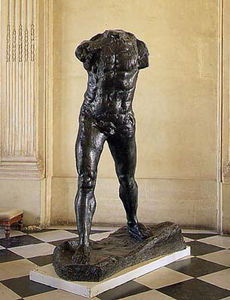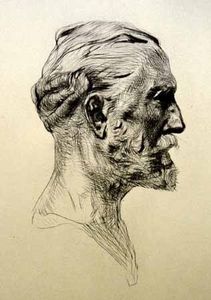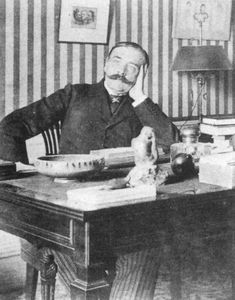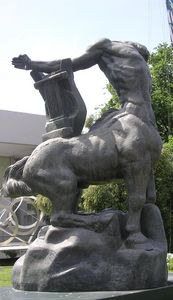Auguste Rodin
- Full Name:
- Francois-Auguste-Rene Rodin
- Short Name:
- Rodin
- Date of Birth:
- 12 Nov 1840
- Date of Death:
- 17 Nov 1917
- Focus:
- Sculpture, Drawings
- Mediums:
- Metal, Clay
- Subjects:
- Figure
- Art Movement:
- Impressionism
- Hometown:
- Paris, France
- Auguste Rodin Page's Content
- Artistic Context
- Biography
- Style and Technique
- Who or What Influenced
- Works
- Followers
- Critical Reception
- Bibliography
Auguste Rodin Artistic Context
The Impressionist movement was largely centered on Paris, France, and many of the main artists were French natives. After the very realistic art of the Romantic and Realistic movements before it, Impressionism saw a change in style with many artists choosing to depict landscapes and people as they viewed them rather than in reality.
Auguste Rodin Biography
Early Years:
Auguste Rodin was born into humble beginnings in Paris, France, in 1840. After failing to excel academically he was sent to a boarding school run by an uncle in Beauvais but Rodin's shy nature and shortsightedness meant that he could still barely read and write by the time he left in 1854.
After enrolling in the École Impériale de Dessin Rodin began to experiment with drawing and modeling in clay. He applied to France's most prestigious art school, École des Beaux-Arts but was rejected three times. A job in a commercial art workshop in 1858 allowed him to develop his sculpting skills and he began to work on his privert pieces, exhibiting Man with a Broken nose in 1863 at the Paris Salon. After working in Brussels for several months the artist exhibited The Age of Bronze, the first of his pieces that truly caught the attention of Parisian society.
Middle Years:
Although Rodin became known under controversial circumstances, he was commissioned by the French Ministry of Fine Arts in 1880 and the resulting piece, was The Gates of Hell which spawned some of Rodin's most famous works.
Although he never married, his long-term partner was Rose Beuret and the couple had one son together. Although Rodin stayed with Rose, it was during this period of his life that he embarked on an intense relationship with a young sculptor named Camille Claudel. Both artists were heavily influenced by the other and carried on their relationship until Claudel broke it off in 1898, after realizing Rodin would never leave Rose.
Some of Rodin's most famous works from this period include monuments to some of the greats of Paris society, including the writers Victor Hugo and Honoré de Balzac and the artist Claude Lorrain.
Later Years:
In 1908 Rodin moved into the Hotel Biron and although the building was due to be demolished in 1912, Rodin used his influence to save it and in return promised that his whole estate would be given to the French Government upon his death.
In 1917 Rodin finally married Rose, but a year later they were both dead. Rodin was 77 when he died.
Auguste Rodin Style and Technique
Auguste Rodin's style continued to develop throughout his long and distinguished career. The lack of any formal training, unlike many of his contemporaries, would ultimately be the making of one of the most innovative sculptors the world has ever known.
The realism that defined Rodin's early work developed into a more expressionist style but his skill at rendering the human figure was key to his success and is something that few other artists can rival.
Early Style:
Rodin's early style was developed by focusing on his own education and the works of other sculptors of the time who received training at the Belle de Artes. Rodin's rebellion against academic sculpture helped him to stand out at the Salon exhibition and it allowed him to change the face of sculpturing for a new generation of artists.
Rodin sought to depict the physical realism of his subjects rather than their character and this led to his first life-size work, The Age of Bronze, being falsely accused of being cast from a model, something which was not artistically acceptable until the 1960s.
Later Style:
Rodin drew inspiration from Donatello and other great bronze sculptors of the Renaissance for works such as The Age of Bronze and St. John the Baptist Preaching. Such works also resemble pieces from the contemporary Neo-Florentines such as Paul Dubois. The Neo-Florentines used supple modeling to portray a sense of life and this resulted in accurate interpretations in bronze. This technique was obvious in Rodin's work throughout the 1880s.
Later on in his career Rodin spent a great deal of time working on alternative techniques which involved assembling existing fragments. This dedication resulted in creative pieces such as The Gates of Hell which was made up of several hundred figures which Rodin went on to use on many different occasions.
In the latter years of Rodin's life his works became more expressionist and some pieces such as Monument to Balzac show the artist moving away from the realism that separated him from academic sculptors.
The fact that Rodin endlessly studied his models meant that he understood the human anatomy intimately and such knowledge of the human form resulted in even his most distorted pieces retaining a great sense of reality.
Who or What Influenced Auguste Rodin
Auguste Rodin was inspired by a number of artists and places during his travels around Europe. The artist's enjoyment of literary work can also be seen in a number of his works as can a sometimes obsessive interest in history which led to many of his pieces being created time and time again over a number of years.
Literary Inspirations:
Literature has long influenced art and the work of Rodin was no exception. Several of the artist's most prominent works take inspiration from masterpieces that were popular during his lifetime. The Gates of Hell, for example, is filled with imagery from the 12th century epic poem The Divine Comedy by Dante.
Another inspiration for this work was Baulelaire's Les Fleurs du Mal (The Flowers of Evil) which was a controversial yet popular book in Paris around 1857.
Ancient Art:
Rodin's trip to Italy in 1875 would become highly influential in many of his early works. The Greek and Roman sculpture which would have undoubtedly been accessible to Rodin in Rome is often strikingly realistic but with exaggerated muscles and life-size male nudes.
The influence of these works on Rodin's early pieces such as The Age of Bronze and St. John the Baptist Preaching are clear to see, although critically these pieces were not as successful as many of his later offerings.
Rodin drew inspiration for the Age of Bronze from Michelangelo's Dying Slave, which he had studied at the Louvre. He admired Michelangelo's depiction of the human form and attempted to combine this with his own ideas on human nature.
Throughout his career, Rodin was compared to Michelangelo on several occasions.
Camille Claudel:
Unfortunately Camille Claudel has been best remembered as the mistress of Auguste Rodin rather than a talented artist in her own right. The relationship was extremely influential on both artists and the similarity of their work during this time demonstrates this.
Claudel was apparently the inspiration for one of Rodin's most famous works, The Kiss. The Musée Rodin in Paris continues to display many of Claudel's works which demonstrates her importance in Rodin's progression as a sculptor.
Auguste Rodin Works
Auguste Rodin Followers
Rodin was a massively influential sculptor during his lifetime and this is evident in the work of many of his assistants as well as literary figures from this period. Though, despite his innovative work, fewer artists today reference Rodin's work.
Literary Followers:
Rainer Maria Rilke:
Rilke was a young German poet who went on to become firm friends with Rodin as they developed projects for which Rilke would write the monographs.
Octave Mirbeau:
Another literary figure who found great inspiration in the work of Rodin. An art critic and novelist, Mirbeau was one of the first people to defend Rodin's new way of sculpting and his prominence helped Rodin to achieve success in Paris.
Artists:
Camille Claudel:
Claudel was often dismissed as solely Rodin's lover but she was a skilled artist and similarities in the style of both can be seen in Claudel's Bronze Waltz and Rodin's The Kiss.
Charles Despiau:
As one of Rodin's assistants Despiau worked in the artist's studio from 1907 to 1914 and later went on to achieve his own success as an artist.
Antoine Bourdelle:
Bourdelle was one of the students that most impressed Rodin and he also taught many of Rodin's other assistants. Geometry, construction and invention were all important to Bourdelle and he became one of the pioneers of 20th century sculpture.
Malvina Hoffman:
Hoffman was moved to Paris from Italy and became a pupil of Rodin's but she was convinced by the artist to return to New York and attend anatomy classes at the College of Physicians and Surgeons which led to several years dissecting bodies. This experience, combined with a great interest in anthropology, resulted in several series of sculpture demonstrating Hoffman's abilities to portray anatomical features in great impressive detail.
Auguste Rodin Critical Reception
Auguste Rodin is one of the world's greatest sculptors and his popularity during his own lifetime is unusual in the art world. Whilst still pushing the boundaries of modern art Rodin became known to many as the Father of modern sculpture.
Contemporary Reception:
Initially, the reception of Rodin's first public work - The Vanquished - was not at all positive due to the fact that it was incredibly realistic. Later renamed The Age of Bronze this piece was admitted to the Paris Salon in 1877 and critics were highly suspicious of its realism, accusing Rodin of making a cast of a model rather than carving the original by hand. This accusation was unfounded but rumors persisted for some years, ultimately forcing Rodin to rename the sculpture.
Although Rodin's career reached astronomical heights in his later years, some of the works produced were met with harsh criticism. His Monument to Balzac, for instance, became something of an obsession for Rodin, with the artist producing many studies of the man, culminating in his 1898 study for the Literary Society of Paris.
The result was a distorted take on the writer, Balzac, which was met with disbelief, ridicule, and outrage. Consequently, Rodin moved the sculpture to his studio outside Paris and refused to let it ever be cast in bronze while he was alive.
Despite such public criticism, Rodin's work was increasingly popular and in 1900 the aristocrats of Paris organized for him to have his own pavilion at the World Exhibition (Exposition Universelle) demonstrating both his impressive oeuvre and new-found status.
20th Century Reception:
Despite his grand funeral, the popularity of Rodin's art waned substantially in the decades following his death due to a change in aesthetic value and the growing influence of Post-Impressionism and Symbolist art.
21st Century Reception:
Today's interest in Rodin's work stems as much from his scandalous personal life as from his revolutionary style.
Rodin is known as the most important sculptor of modern times and the feeling of incompletion in some of his works, such as The Walking Man, went on to influence more abstract sculptural forms throughout the twentieth century.
Auguste Rodin Bibliography
Below are some literary and internet-based sources that can help to give a more in-depth look at the life and work of Auguste Rodin.
Literary Sources:
• Ruth Butler, Rodin: The Shape of Genius (1993)
• Robert Descharmes and Jean François Chabrun, Auguste Rodin, trans. by E. Lausanne (1967)
• Albert E. Elsen, Rodin's Gates of Hell (1960; repr. 1985)
• Frederic V. Grunfeld, Rodin: A Biography (1987)
• William H. Hale, The World of Rodin (1969)
• Rainer Maria Rilke, Auguste Rodin, trans. by J. Lemont and H. Trausil (1945; repr. 1974)
• Denys Sutton, Triumphant Satyr (1966)
• John L. Tancock, The Sculpture of Auguste Rodin, rev. ed. (1976; repr. 1989)
• James Fenton, Leonardo's Nephew, Essays on Art and Artists, 'The Secrets of Maillol', pp160-184. Penguin paperback (1999)
Internet Sources:
http://www.rodinmuseum.org/
http://www.metmuseum.org/toah/
Exhibition Catalogues:
• Ann Elliot, Rodin in Lewes, Lewes Town Hall, 5 June-10 October 1999
• Art Français, Exposition d'art decorative contemporain, 1800-1885, Grosvenor House, London, 1914
• Albert E Elsen, Rodin, The Museum of Modern Art, New York, 1963
• Musée national des beaux-arts du Québec/Musée Rodin, Paris, Camille Claudel & Rodin: Fateful Encounter, Hazan, 2005
• Musée Rodin, La Sculpture dans l'espace: Rodin, Brancusi, Giacometti, Paris, 2005
• Tate Gallery, Venus Redefined: Sculpture by Rodin, Matisse and Contemporaries, 15 March 1994 - July 1995

